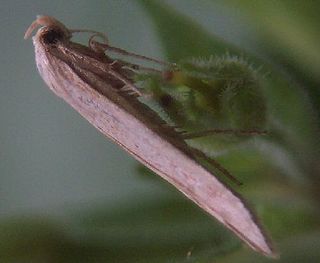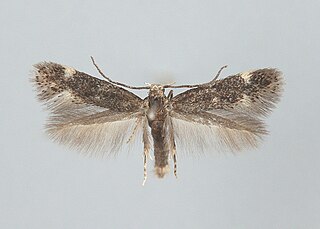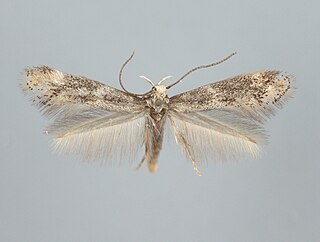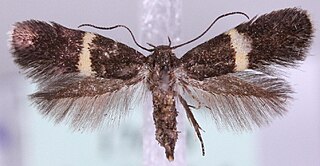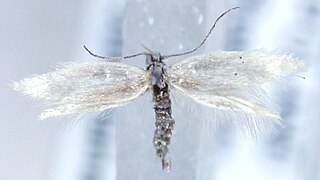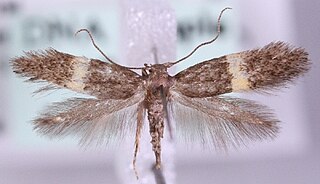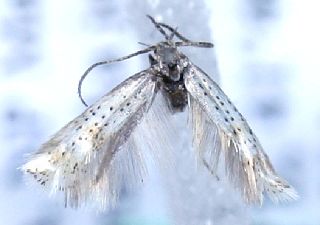| Elachista argentella | |
|---|---|
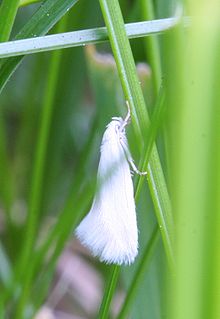 | |
 | |
| Scientific classification | |
| Domain: | Eukaryota |
| Kingdom: | Animalia |
| Phylum: | Arthropoda |
| Class: | Insecta |
| Order: | Lepidoptera |
| Family: | Elachistidae |
| Genus: | Elachista |
| Species: | E. argentella |
| Binomial name | |
| Elachista argentella (Clerck, 1759) | |
| Synonyms | |
| |
Elachista argentella is a moth of the family Elachistidae found in all of Europe, except the Balkan Peninsula.

The wingspan is 11–12 millimetres (0.43–0.47 in). The head is white. Forewings are white, sometimes ochreous- tinged. Hindwings in male grey in female grey-whitish.The larva is greenish-grey; dorsal line whitish;head pale brown. [1] [2]
The moth flies from May to July depending on the location.
The larvae feed on a number of different species of grass including Agrostis , Avenula pratensis , Avenula pubescens , Brachypodium pinnatum , Brachypodium sylvaticum , Bromus erectus , Bromus sterilis , Calamagrostis epigejos , Dactylis glomerata , Deschampsia cespitosa , Elymus hispidus , Elymus repens , Festuca ovina , Festuca rubra , Festuca trachyphylla , Festuca valesiaca , Holcus lanatus , Holcus mollis , Koeleria glauca , Koeleria grandis , Koeleria macrantha , Leymus arenarius , Phalaris arundinacea , Phleum and Poa pratensis . They mine the leaves of their host plant. [3]
